10 Stunning Private Mansions (Hôtels Particuliers) in Paris
Hôtels Particuliers are grand private mansions built for the French elite, mostly in the 17th and 18th centuries. These buildings often feature ornate facades, inner courtyards, and formal gardens, many hidden behind plain walls in the city. Some are now museums or cultural institutions. Others remain private.
In this list, we’ll spotlight nine remarkable mansions, some of which are open to the public.
1. Hôtel de Sully
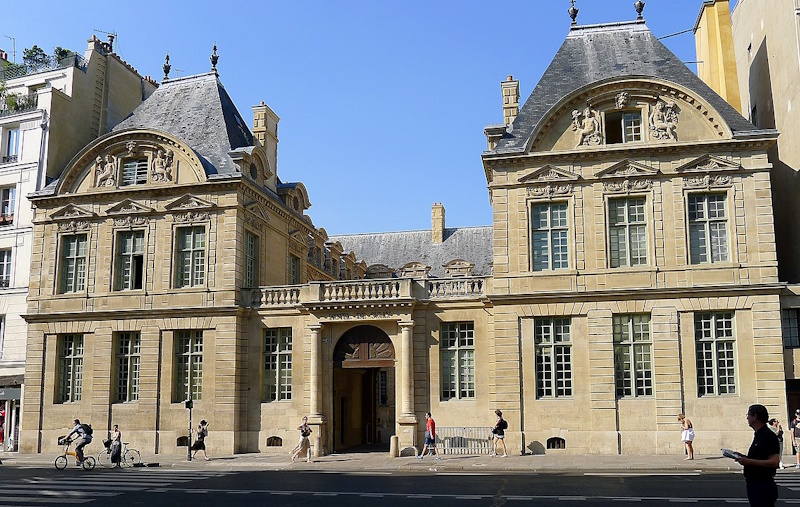
Located at 62 rue Saint-Antoine in the Marais, Hôtel de Sully is one of the best-preserved private mansions in Paris. Built in the early 1600s, it was designed in the Louis XIII style, with intricate stone carvings and a grand facade. It was once home to the Duke of Sully

The gardens and courtyard are accessible to the public from Place des Vosges. The interior is not regularly open for visits, but the Centre des Monuments Nationaux offices are housed here.
2. Hôtel Lambert
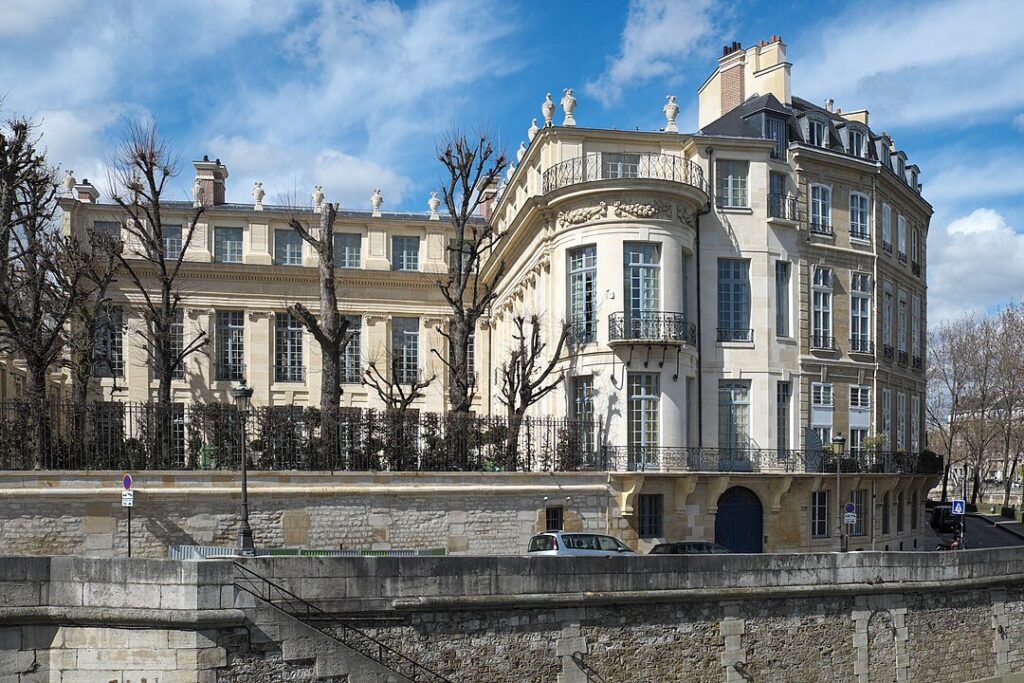
Hôtel Lambert sits on Île Saint-Louis. Built in the 1640s by Louis Le Vau, the architect behind parts of Versailles, it was commissioned by the wealthy Lambert de Thorigny family.
Since then this grand mansion has been the home of some of the most notable and chicest figures in history, from the Marquise du Châtelet and her then lover Voltaire, Baron de Redé and Baron Guy and Marie-Hélène de Rothschild.

Inside, artists like Charles Le Brun and Eustache Le Sueur created stunning frescoes. Over the years, it hosted figures like Chopin and Voltaire.
Though privately owned, it remains one of the most famous mansions on the island. The mansion is not open to visitors.
3. Hôtel Carnavalet
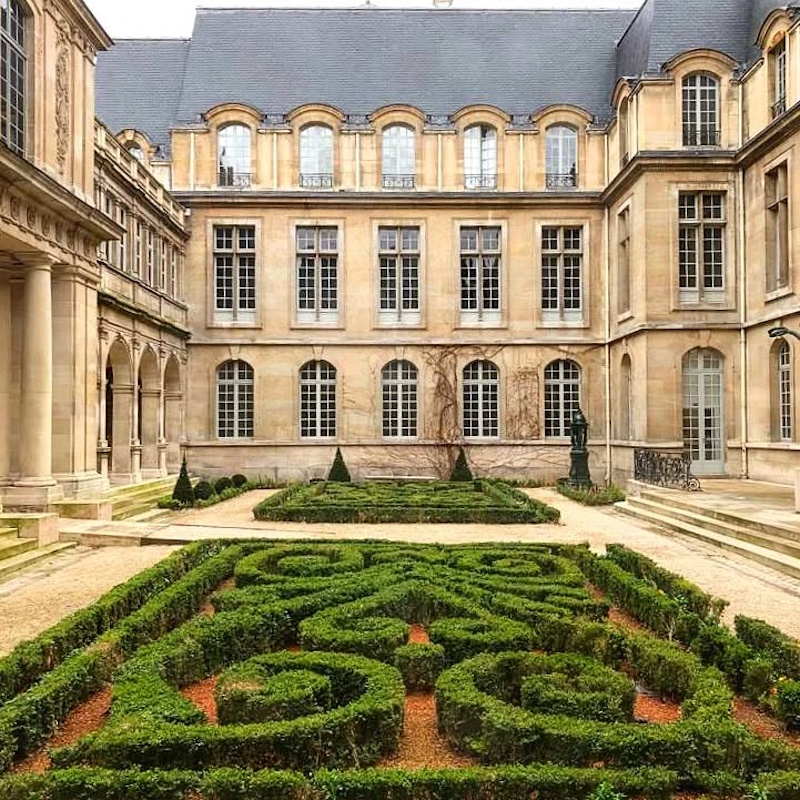
Located at 23 rue de Sévigné, Hôtel Carnavalet dates back to 1548, which makes it one of Paris’ oldest mansions.
Originally built for Jacques des Ligneris, a prominent magistrate, it was later remodeled by François Mansart, a celebrated architect known for pioneering classical architecture in France.
Now home to the Carnavalet Museum, it showcases the history of Paris through a vast collection of artifacts from the French Revolution to modern times.
4. Hôtel de Lauzun
Hôtel de Lauzun sits at 17 quai d’Anjou in the 4th arrondissement, on Île Saint-Louis. Built in the mid-17th century, it stands out for its richly decorated interiors, filled with gilded ceilings, painted panels, and elaborate carvings.

It was home to the eccentric Duke de Lauzun and later hosted artists and writers like Baudelaire and Théophile Gautier, who gathered here for opium-fueled literary salons.
Owned by the City of Paris, it’s usually closed to the public but opens during special events (e.g., Journées du Patrimoine in September) or with advance booking for group tours.
5. Hôtel Biron

Hôtel Biron sits at 77 rue de Varenne in the 7th arrondissement. Built in the early 18th century, this grand mansion once housed aristocrats, a religious school, and even artists renting rooms – including Auguste Rodin.
The sculptor later used it as his studio and, before his death, arranged for it to become a museum.
Today, it’s home to the Rodin Museum, surrounded by a peaceful garden filled with his most famous works, including The Thinker and The Gates of Hell. Paid entry.
6. Hôtel de Soubise
Hôtel de Soubise stands at 60 rue des Francs-Bourgeois in the 3rd arrondissement in the Marais. Built in the early 18th century for the Prince of Soubise, it replaced a 14th-century mansion owned by the powerful Clisson and Guise families.
Its interiors are among the most extravagant in Paris, with gilded moldings, painted ceilings, and rococo-style salons designed by Germain Boffrand.
Partially open. The splendid salons with detailed frescoes and artistic craftsmanship can be visited as part of the National Archives museum (Archives Nationales). Some rooms rotate in and out of public access depending on the exhibition.
7. Hôtel de la Païva
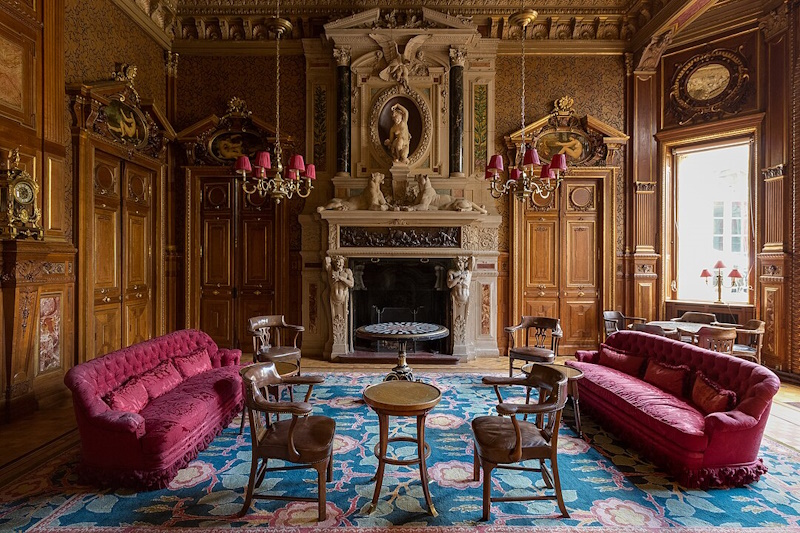
Located at 25 avenue des Champs-Élysées in the 8th, Hôtel de la Païva was completed in 1865 for Esther Lachmann, better known as La Païva – a courtesan renowned for her connections to Parisian high society.
Pierre Manguin, an accomplished architect of the Second Empire, designed this mansion to showcase sheer luxury. The building features exquisite marble staircases, mosaics, and stained glass.
Once a grand residence, it’s now an exclusive private club (Travellers Club) that continues to reflect the extravagant tastes of 19th-century Parisian elites. No public access unless you’re a member or guest.
8. Hôtel Salomon de Rothschild
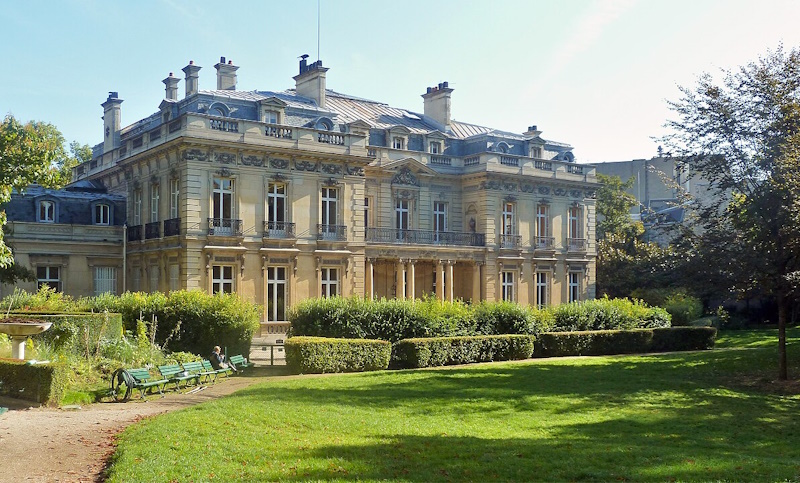
Hôtel Salomon de Rothschild sits rue Berryer in the 8th arrondissement, near Parc Monceau. Built in the 19th century for Adèle de Rothschild, it became a hub for Parisian high society, hosting opulent receptions and gatherings of artists and intellectuals.
Known for her philanthropic and cultural contributions, she played a significant role in supporting the arts and preserving her family’s legacy. The Neo-Louis XVI style reflects the opulence of the Rothschild family.
After her death, she donated the mansion to the state for cultural purposes. Today, it serves as an event venue and art center, with its elegant gardens and grand interiors occasionally open for exhibitions and private events (not open daily).
9. Hôtel Matignon
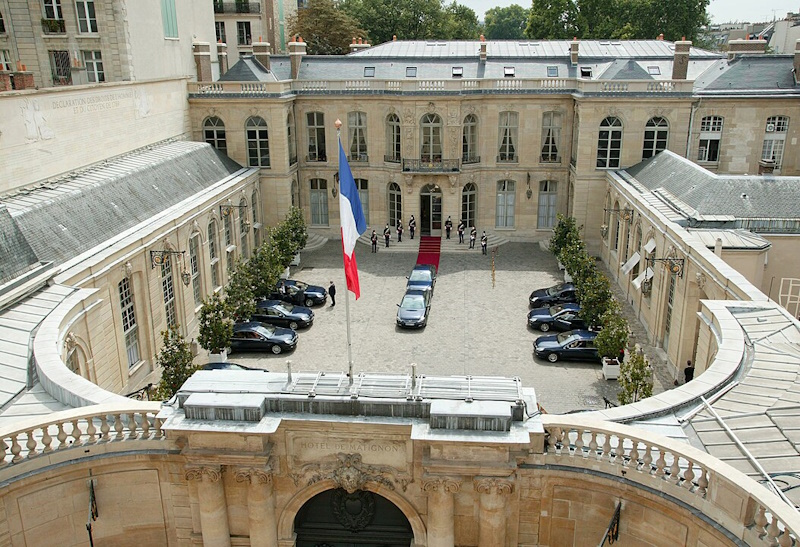
At 57 rue de Varenne in the 7th arrondissement, Hôtel Matignon is one of the most important residences in France. It was built in 1725 for the Prince of Tingry by architect Jean Courtonne, a celebrated 18th-century French architect known for designing grand residences for the Parisian elite.
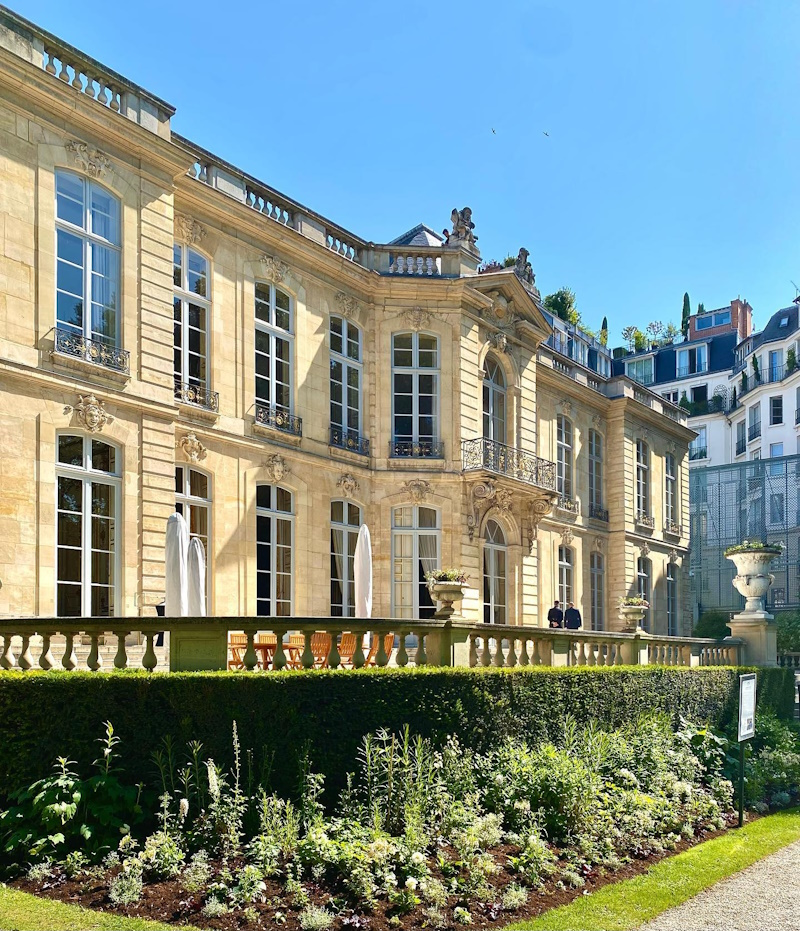
Built in the early 18th century for the Prince of Tingry, it later became home to various aristocrats before being acquired by the French government. Since 1935, it has served as the official residence of the French Prime Minister.
The estate spans over three hectares, making it the largest private garden in Paris, even bigger than the Élysée’s.
The interiors, which feature impressive woodwork and tapestries, are closed to the public, but the vast gardens occasionally open for visits – mostly for special occasions like Journées du Patrimoine.
10. Hôtel Camondo
Hôtel Camondo stands at 63 rue de Monceau, just next to Parc Monceau in the 8th arrondissement. It was built in the early 20th century by banker Moïse de Camondo to resemble an 18th-century aristocratic mansion, down to the architectural details and decorative arts.
Inside, the house is left almost exactly as it was when Camondo lived there. Rooms are filled with rare tapestries, porcelain, and French furniture from the Louis XV and Louis XVI periods. Every object was carefully chosen to recreate the elegance of the pre-revolutionary era.
The house became a memorial to Moïse’s son, Nissim, who died in WWI. It’s now a museum open to the public, preserved as a snapshot of Parisian high society before WWII.
